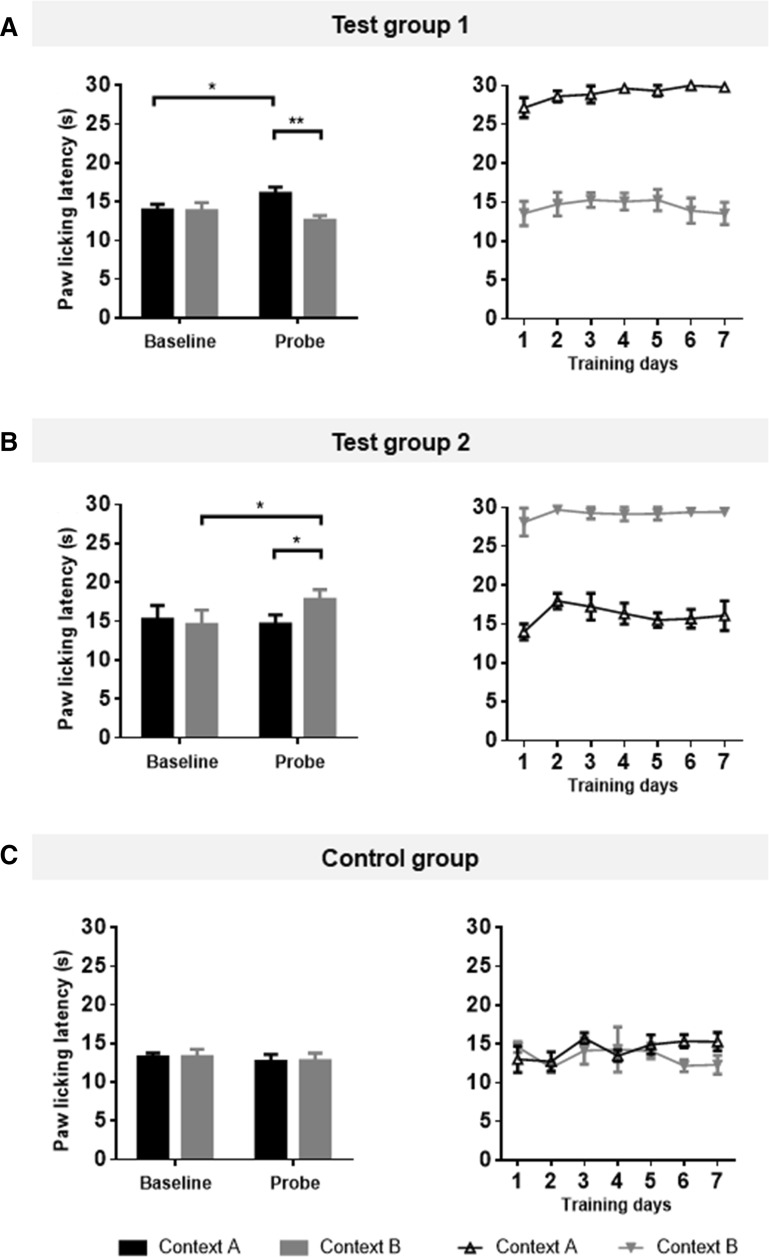Fig. 2.
Establishment of the context-based analgesia model in rats. Three groups were trained and tested in the three-phase experimental paradigm. Context A (black) was a bright room whereas Context B (grey) was a dim room. Paw licking latencies (PLLs) of Test group 1 (A), Test group 2 (B), and Control group (C) in the baseline, training and probe phases are shown. The different contexts modulated pain perception with the same hot-plate temperature in the probe test. The context-based analgesic effect was indicated by the differential PLLs between baseline and the probe test with the same context and hot-plate temperature. n = 8, *P < 0.05, **P < 0.01, paired t test.

